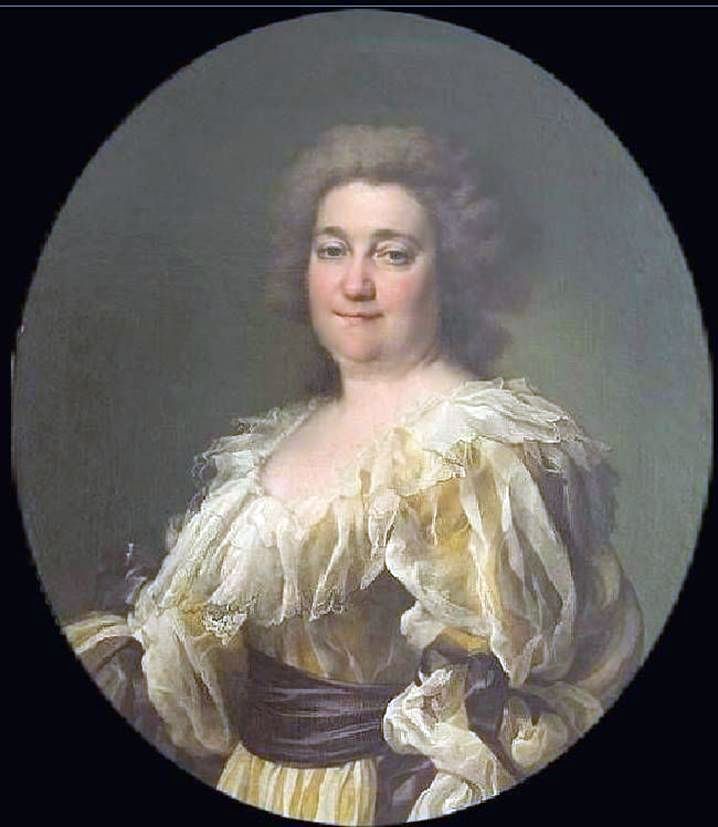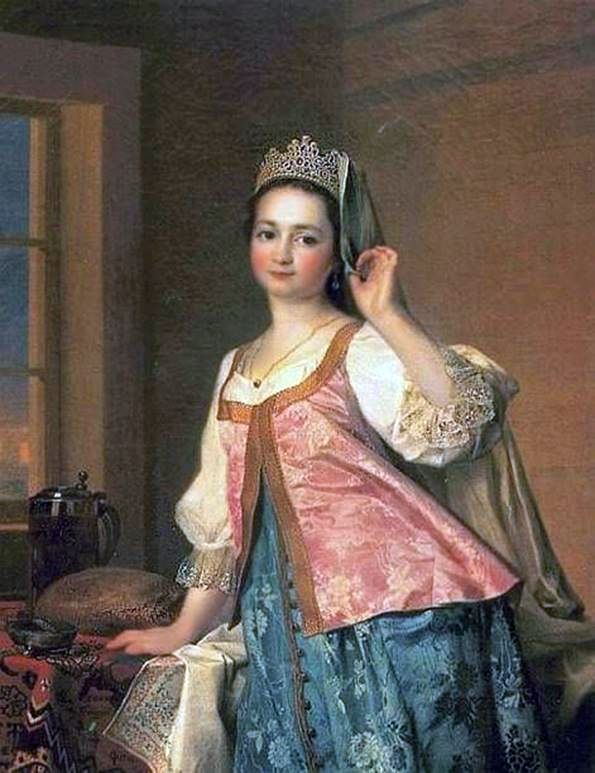
In the portrait of his wife, the artist, following objectivity in the transfer of physical appearance, managed at the same time to highlight the inherent spiritual qualities: kindness and wisdom. Nastasya Yakovlevna Levitskaya – the artist’s wife. Information about her life remained extremely small. N. Ya. Levitskaya was eleven years younger than her husband. According to the metric books, she had three children: sons Gregory and Alexey, who died in infancy, and daughter Agafya. For a long time, the portrait was considered an image of Catherine II, then a portrait of an unknown.
It was possible to determine the personality of the model through the study of a miniature varied copy stored in the Chelyabinsk Picture Gallery, on the back of which there was an inscription “Nastasya Yakovlevna Levitskaya.” Thanks to the Chelyabinsk copy, it was possible to correctly identify the identity of the woman depicted in another portrait, kept in the Russian Museum and written by Levitsky in the 1780s.
The portrait, attributed in a similar way, more than a hundred years ago belonged to a retired Petersburg official, a titular adviser PF Tempinsky, and was considered an image of Catherine II. When buying a portrait for the Hermitage, experts, including prominent artists I. N. Kramskoy and L. P. Bogolyubov, confirmed that the empress was depicted. Later, when the portrait was handed over to the Russian Museum, this definition was nevertheless rejected, although the facial features really captured the general appearance of Catherine II.
The presence of similarities suggests that Nastasya Yakovlevna could serve as a model for the artist in the performance of custom portraits of the empress. It should be noted at the same time and in the very portrait of his wife raid solemn official, separating him from the portraits of the chamber genre “
 Portrait d’A. Ya. Levitskaya – Dmitry Levitsky
Portrait d’A. Ya. Levitskaya – Dmitry Levitsky Retrato de A. Ya. Levitskaya – Dmitry Levitsky
Retrato de A. Ya. Levitskaya – Dmitry Levitsky Portrait of A. D. Levitskaya (Agashi) by Dmitry Levitsky
Portrait of A. D. Levitskaya (Agashi) by Dmitry Levitsky Portrait of N. A. Sezamov by Dmitry Levitsky
Portrait of N. A. Sezamov by Dmitry Levitsky Portrait of D. Didro by Dmitry Levitsky
Portrait of D. Didro by Dmitry Levitsky Portrait of the priest Peter Levitsky by Dmitry Levitsky
Portrait of the priest Peter Levitsky by Dmitry Levitsky Portrait of Molchanova E. And by Dmitry Levitsky
Portrait of Molchanova E. And by Dmitry Levitsky Portrait d’A. D. Levitskaya (Agashi) – Dmitry Levitsky
Portrait d’A. D. Levitskaya (Agashi) – Dmitry Levitsky